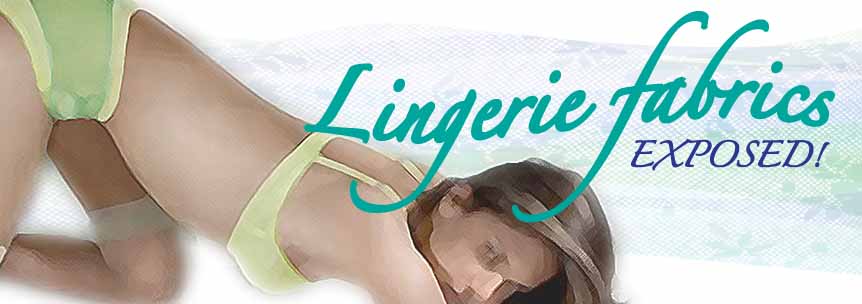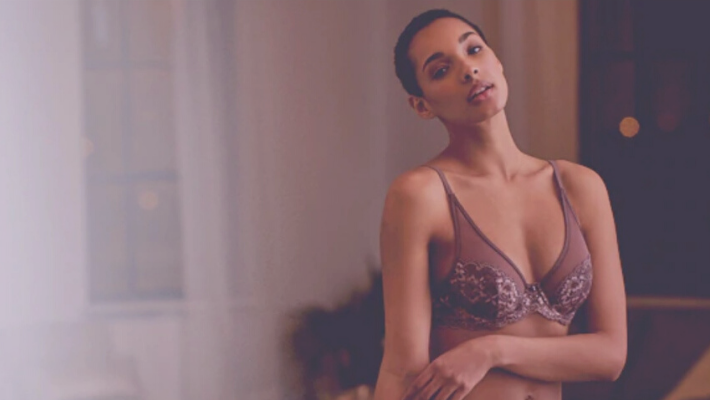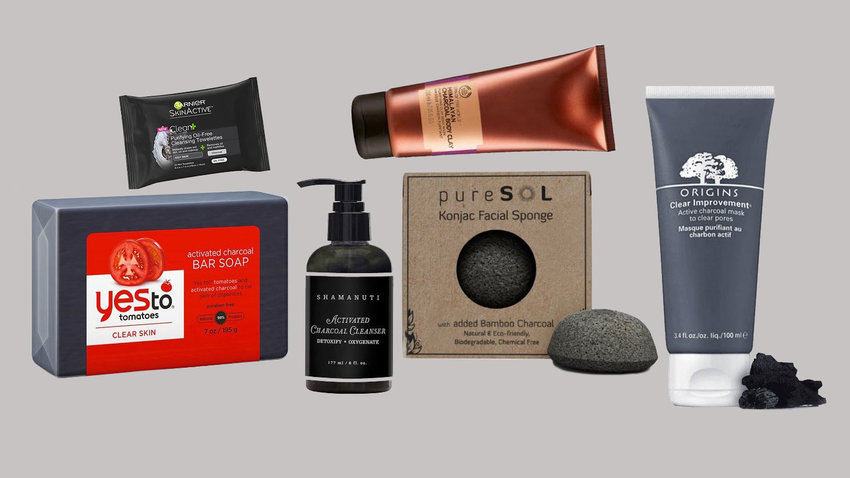Have you ever wondered where the fabrics you are wearing have come from and what they are made of? Here are a few of the most commonly used new fabrics now being used in lingerie.
Microfibers were originally intended for space and military uses, then lingerie designers started to use them since their silkiness and fluidity made them perfect for undies. They are synthetically produced yarns finer than a human hair, very luxurious yet machine washable, will not lose their shape, can mold very successfully to the body and they’re breathable. Tactel is a branded microfiber made by Dupont that is commonly used for lingerie.
Microfibers can easily be produced with a variety of useful finishes such as anti-bacterial and deodorant. Scientists are even adding microcapsules containing vitamins, moisturizers, anti-aging creams and perfumes to microfibers, and you may have already heard about scented panties!
Lycra is another brand name owned by Dupont which adds elasticity to a fabric and allows it to stretch and recover. Similar stretch products that are added to fabrics are Spandex and Elastane, they have slightly different properties and characteristics but basically do the same thing. Almost all knits used for lingerie need the addition of a stretch fiber. Depending on the end use some will have more than others, for instance shapewear will contain a higher percentage of stretch fiber to grip and tighten around the body than a regular panty. Knitted cottons and modals for sleepwear add a small amount to avoid ‘bagging’ at the knees, elbows and derriere.
Modal is very soft and smooth, breathes well and is beautiful to the touch. Made from reconstituted cellulose from beech trees, it’s actually termed a ‘bio-based’ fabric rather than natural because it still needs chemical processing. It has quite a few advantages over cotton – it’s very absorbent, resistant to shrinking, pilling and fading, and because mineral deposits from hard water don’t stick to the surface it keeps it’s softness even after repeated washing. Micromodal is even finer and silkier than regular modal.
Bamboo is made from the pulp of bamboo grass, it’s very quick growing and doesn’t need pesticides or herbicides to thrive therefore plantations can easily be kept organic. If kept unbleached it’s very light on chemicals that could harm the environment. Bamboo fabric is very absorbent, wicking moisture away from the skin and allowing it to breathe. And it’s naturally anti-bacterial, killing odour causing bacteria that live on human skin, making your clothes smell more sweet!
The exciting development of bamboo fabrics has inspired scientists to look at other natural sources of fibers for our clothing. Some beautiful silky fabrics have been created from soyabeans. Fabrics made from banana stalks are environmentally friendly and mixed with cotton are light and absorbent. One Japanese company has even developed a type of viscose made from crab shells!
So go have fun and check out the ‘contents’ label inside your lingerie to see the benefits of the fabric you’re wearing!
Teresa
teresa@nowthatslingerie.com







Leave a Comment